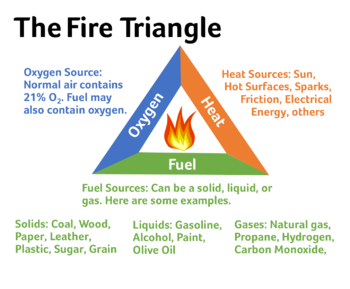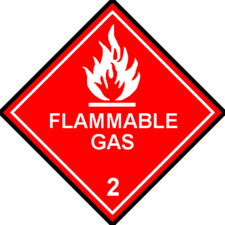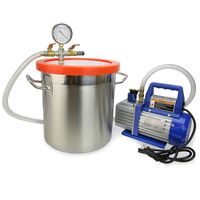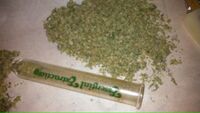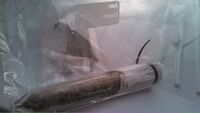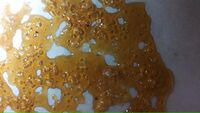Butane hash oil (BHO) extraction

Do not perform this procedure indoors.
Due to the explosive nature of the solvents involved, attempting this procedure in underventilated areas (e.g. such as a small apartment room or basement) can result in serious injury, death or the destruction of property.
This guide is provided for informational and educational purposes only. We do not encourage you to break the law and cannot claim any responsibility for your actions. |
This is a tutorial for the extraction of a resin from cannabis plant material using liquid butane as a solvent (commonly referred to as Butane Hash Oil, Butane Honey Oil, or B.H.O.). It is a highly concentrated form of cannabis extracts containing many of its cannabinoids and terpenes.
Before starting, readers should be aware that performing this type of extraction indoors is considered to be inherently dangerous due to the unpredictable flammable and explosive natures of the materials involved, many of which can lead to property damage, serious bodily injury,[1] or death.
Despite the attempt at creating a highly optimized and simplified version of this extraction, it should be noted that it still requires some more advanced technical equipment (e.g. a vacuum pump). This procedure should not be performed if one cannot afford to acquire these essential pieces of equipment as there is no way to safely substitute them with something else.
Likewise, the ideal setting for this procedure is a highly-controlled, safety-inspected professional or lab environment; conducting it in an outdoor home setting is generally not advised for legal, health, and environmental reasons. This tutorial is provided strictly for harm-reduction purposes only.
Design
The objective of this tutorial is to provide a simple, straight-forward and risk-minimized procedure for one seeking to produce a personal amount of hash oil in an outdoor environment. It has been deliberately designed to use the simplest, most available materials and equipment that are typically accessible to the average person while keeping the safety of both the producer as well as the local environment in mind.
Risks and Hazards
There have been many documented explosive events that have resulted in great bodily harm and loss of life[2]. Due to the inherent risks this procedure entails, it is imperative that one remain vigilant at identifying any possible ignition hazards throughout the entirety of the process.
Flammability of Butane
Butane is a flammable gas with no odor and the ability to accumulate indoors and in unventilated areas. The sudden accumulation of enough butane gas in an enclosed area presents a significant risk for sudden, unpredictable explosions, which often lead to fires, high-degree burns and sometimes fatal injury to the person performing the procedure. Therefore, utmost care and caution must be used when working in an environment that involves the use of butane gas.
Additionally, it should be noted that performing this extraction indoors significantly increases the risk of fires, explosions, and physical harm. Outside of a fully functioning fume hood, the production of B.H.O indoors carries with it a significant inherent risk for explosions and bodily harm. Therefore, while one may personally know of successful experiences of producing B.H.O. in an indoor environment, this should not be taken as evidence of its safety, especially given the large element of chance involved.
Spark sources
While butane is a flammable gas, there needs to be an ignition source or spark in order for an explosive event to occur. This spark can come from common sense items such as a pocket lighter or pilot light on a stove, but sparks can also occur in less obvious ways such as:
- The generation of static electricity
- Certain materials grinding against each other
- The kinds of electric components found on stoves or car components[3].
Electric sparks can be created simply by wearing clothes - the common "shock" one experiences after shuffling around with socks on and touching a metal object, along with the sparks created by the compressors in most common kitchen freezers, is sufficient to cause an explosive event.
Flammability mechanics
The flammability of a gas depends on its concentration in the atmosphere. The butane concentration must fall between an upper and lower limit to be able to ignite[4]. If the concentration of butane falls in this range and there is a spark present, there will be an ignition and an explosive event.
The "Well-Ventilated Area"
A "well-ventilated area" is commonly used to describe the area that is ideal for a B.H.O. Contrary to popular belief, however, a "well-ventilated area" is not simply a room with all the windows open; it is not a kitchen stove top fan turned on; nor is it a garage with the door propped open to let some air in - these areas do have ventilation, but the movement of air currents is highly unpredictable and often unable to be detected until a dangerous concentration of butane has already been accumulated.
To be considered properly well-ventilated, an area must have a constant and steady supply of fresh air flowing through the area.[5]
It should be noted that performing a B.H.O. extraction in a "well-ventilated area" does not eliminate the flammability and explosion hazard associated with the process, it only lowers this risk. It is always safer to perform this procedure outdoors (provided one take the proper precautions, however, such as acquiring a fire extinguisher and related safety materials in advance).
Frostbite & Extreme Cold Hazards
When a gas expands it takes in heat from the atmosphere. When te liquid butane travels through an extraction tube, it expands as it evaporates into a gas and greatly reduces the temperature of the glass extraction tube and the surrounding environment. Therefore, it is vital to wear cold-resistant safety gloves or handle the extraction tube with a tong apparatus to avoid contact with freezing temperatures that may leave lasting burns.
Equipment
- Cannabis - You can make batches with as little material as you like although it is recommended that at least a half ounce be used for technical and economic reasons. The yield is highly dependent on the strain, batch and overall quality of the material. Good, dried, fresh and uncrushed bud makes the best butane hash oil. Grind them up and do a second extraction to get a lower grade of oil.
- Filtered butane - Butane is available in a variety of grades depending on how many times it has been filtered for impurities. Generally speaking, the more times it has been filtered, the better the quality, but after a certain threshold filtering something additionally is not going to have a detectable difference during the procedure, so be mindful of diminishing returns! 4X has so far proven to be a purity from which no significant quality increase can be expected. N-butane is preferable to Isobutane but typically more expensive and difficult to find available in stores. It is thought to increase the quality of the end product. You will need at least 8 oz of butane for every 1 oz of plant material. There also exist various other solvents that can be used. All gaseous or liquid butane solvents are highly flammable.
- Mirror Test - To test butane of unknown quality, take a mirror or piece of glass and spray a good amount of liquid butane onto it. (You may need some pliers to press the nozzle in) Wait about 5-10 mins for the butane to evaporate and check the mirror for a white residue. Don't confuse water condensation for residue. Many will leave a slight residue, check for Smell. Should your residue smell bad, don't use it.
- Extraction tube - thick glass or stainless steel is recommended due to the lower likelihood of chemical leeching and the formation of byproducts associated with the use plastic, brass and galvanized steel equipment. Thick glass can also handle the freezing/heating cycles present in this extraction better than other materials.
- Vacuum chamber and pump - A single stage vacuum pump is sufficient. Be wary of shorter chambers as the oil might bubble high enough to touch the lid.
- Coffee filter and rubber band or hose clamp
- Pyrex baking dish - This should have a large surface area to increase the evaporation rate of the solvent once it has been poured into it.
- Protective gloves, eyewear and mask - This is needed to protect against the frozen tube and butane vapors, both of which can cause lasting bodily harm - Wearing the proper safety equipment is imperative for properly performing a B.H.O. extraction.
- Heat source - Avoid any open flame heat sources and heat sources that can cause flammable sparks as butane is unpredictable, highly flammable and explosive! An induction hot plate is a viable heat source option, as is any non-sparking, flame proof electrical heater or a simple water bath. If using a hot water bath, make sure to monitor the temperature and set it up over an induction heat source that does not have a pilot light.
- Fire extinguisher - This can make the difference between life and death if a fire or explosion occurs. Always have a fire extinguisher or fire blanket on hand in case of fire. It is important to check the operability of the fire extinguisher by examining it or refilling it at least once an hour to ensure that it will work during an explosive event.
- Parchment paper or slick mat - This is used to pour the B.H.O. into after the purging step, so that it may be transferred into the vacuum chamber.
- Laser thermometer - This greatly aids in monitoring and controlling temperature at various points throughout the procedure.
- Dehydrator - This is an optional piece of equipment that can dehydrate the cannabis in the steps leading up to the extraction procedure.
Procedure
Initial Steps
- Break up (do not grind) the cannabis into small and loose pieces. This increases the surface area for the solvent and maximizes the amount of material to be extracted.
- Pack your extraction tube in a firm manner. Be careful not to over pack the tube full of cannabis as the butane must be allowed to flow through the material freely by the force of gravity.
- Cover the open end with four coffee filters and secure with rubber band or clamp. This is imperative to prevent the plant material from exiting the extraction tube along with the butane. Be careful not to rip the coffee filter, especially when it is wet! It is recommended to attach multiple coffee filters to the bottom of the extraction tube, so have plenty on hand in advance so as to not interrupt the procedure.
- Freeze your filled tube in a freezer within an air-tight container (this minimizes condensation) for a minimum of 2 hours.
- Once frozen, put on the protective gloves, mask, and any other protective equipment and remove the tube from the freezer. Proper protective wear is imperative during this step.
- In an outdoor area, prepare the pyrex tray that will be used to catch the liquid butane exiting the extraction tube. Place the pyrex or glass dish in a WELL ventilated space, which is only truly achievable outdoors or under a fume hood. This step is vital to ensuring a safe and explosion proof extraction process.
- Begin pouring the butane into the extraction tube filled with cannabis from the small vent opening on one end. The butane should flow through the cannabis material to the bottom of the tube, filter through the coffee filters, and pour into the pyrex dish. Due to the expansion of the liquid butane into gaseous butane, there will be a temperature drop within the tube. The tube will become very cold or frozen and impossible to hold without heat-resistant gloves or test tube tongs specifically designed to handle extreme temperatures.
- Continue to pour the butane into the extraction tube until the exiting butane lacks color and runs clear. This indicates that all active ingredients in the cannabis have been extracted.
- At this point, allow most of your solvent to evaporate from the dish in the well-ventilated space free from any potential sources of mechanical or electrical sparks. Agitate occasionally at a safe distance. If using a hot water bath to aid in evaporation, monitor the temperature of the bath to keep it below boiling point yet warm enough to aid in evaporation. Make sure to have a fire extinguisher near by in case of emergencies.
Final Steps
- Once most of the butane has evaporated from the pyrex extraction trays, pour the remaining liquid extract onto parchment paper or an oil slick and place it into the vacuum chamber.
- Turn on the vacuum and allow it to reach full vacuum capacity which is typically around 29 in/Hg at sea level. The oil will begin to bubble and "muffin up" as the trapped butane escapes the extract into the chamber.
- Wait several hours for the "muffin tops" to fall and the bubbles to stop forming. This change signals that butane is exiting the hash oil as intended.
- Once the activity has stopped place the chamber on the heat source and gently raise the temperature to 100-120 degrees Fahrenheit (38-49 degrees Celsius). Be very careful not to add too much heat as this will burn off psychoactive terpenes and darken the end product.
- Wait for any remaining bubbles to stop forming - this signifies that the butane has been removed from the extract. Once this occurs, remove the extract from the vacuum.
- Carefully attempt to flip the oil and melt it into the thinnest layer possible. Again, take care not to add too much heat or fold air into the product as this will add moisture and trap in gasses which will affect the translucence and texture of the end product.
- Place the thin layer of oil back into the chamber at full vacuum. Leave on overnight.
- Repeat the final five steps as many times as necessary to fully purge the oil of impurities.
Notes
- Hash oil making is highly dependent on the strain. A wide variety of different looking products can result from this tek and may range from 'shatter' (the highest grade) to 'crumble' to 'wax' or anywhere in between. High THC strains often tend to "sugar up" and is prized by many for the smoothness of its vaporized taste.
See also
External Links
The information contained in this article was acquired and accumulated from the sources below and should in no way indicate that the author or authors have any practice in illicit activities. Salem (talk) 13:59, 12 January 2015 (UTC)
- https://skunkpharmresearch.com/bho-extraction/
- https://skunkpharmresearch.com/vacuum-purging-and-processing-tips/
- https://learnpot.blogspot.com/p/equipment-fire-extinguisher-safety.html
References
- ↑ Man Severely Burned in Explosion Making Butane Hash Oil: Police, 2016
- ↑ Butane hash oil: A single spark can lead to an explosion during production, OregonLive, 2014
- ↑ "Fire Protection and Prevention", OSHA https://www.osha.gov/dte/grant_materials/fy09/sh-18796-09/fireprotection.pdf
- ↑ Flammability of Gasses http://people.clarkson.edu/~wwilcox/Design/flamlim2.pdf
- ↑ Blankenship, C. (2013). "Adequate Ventilation: How is it defined and does it adequately warn consumers?".
